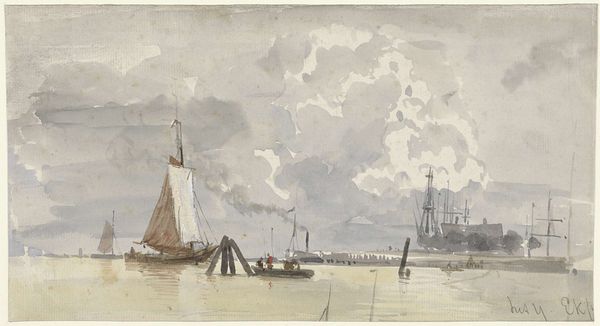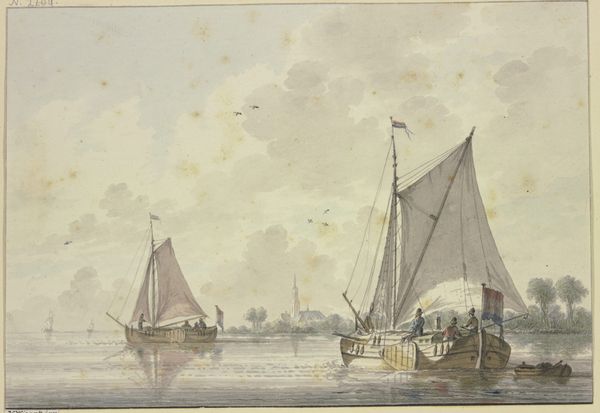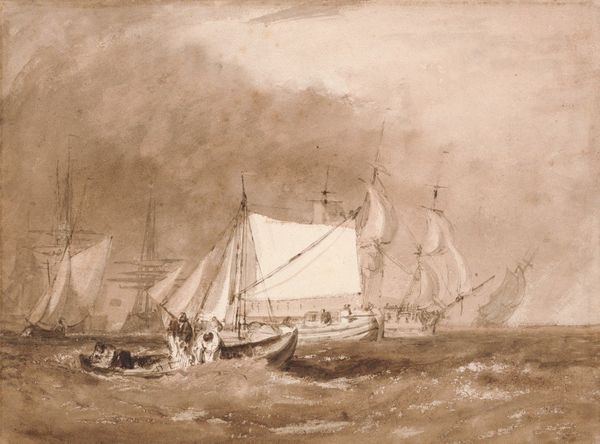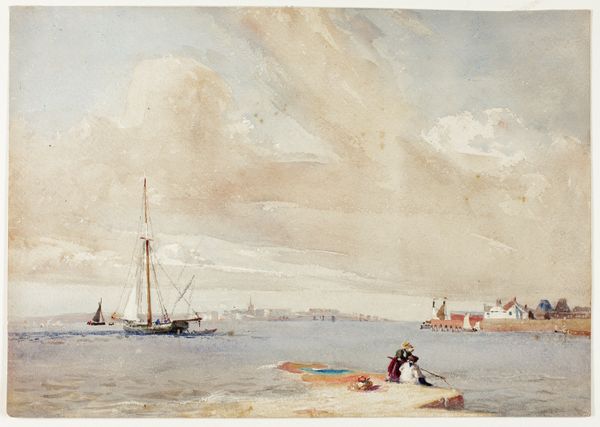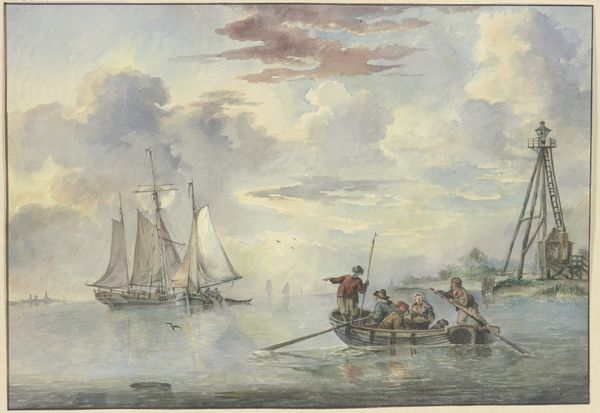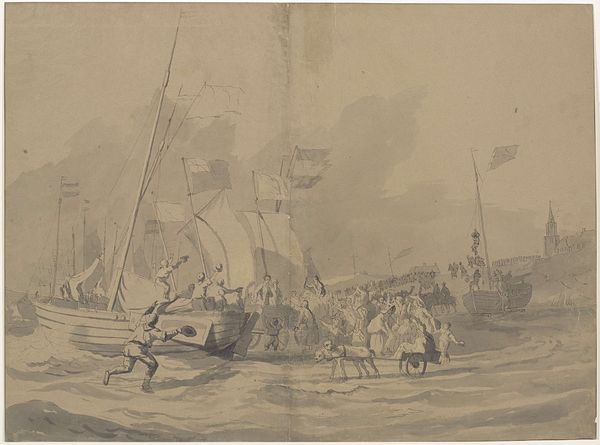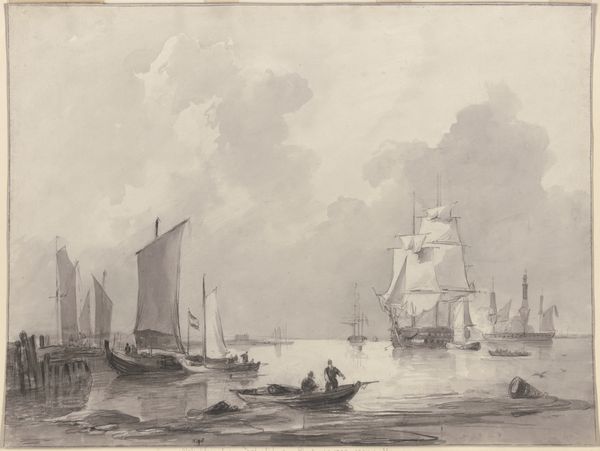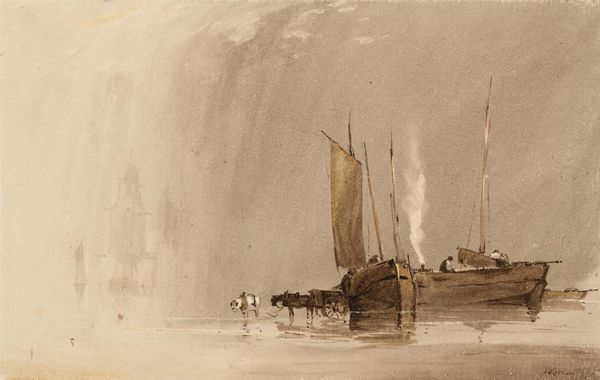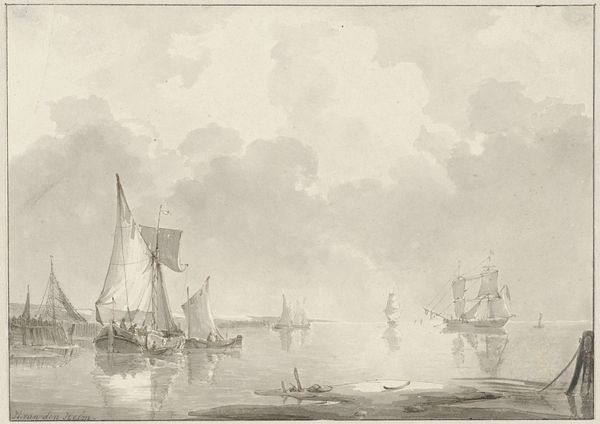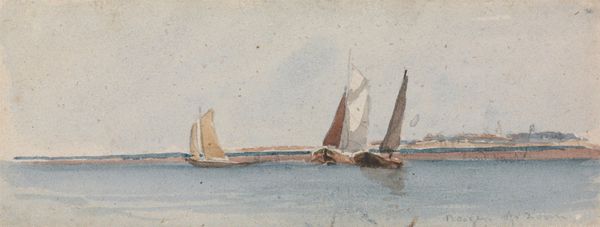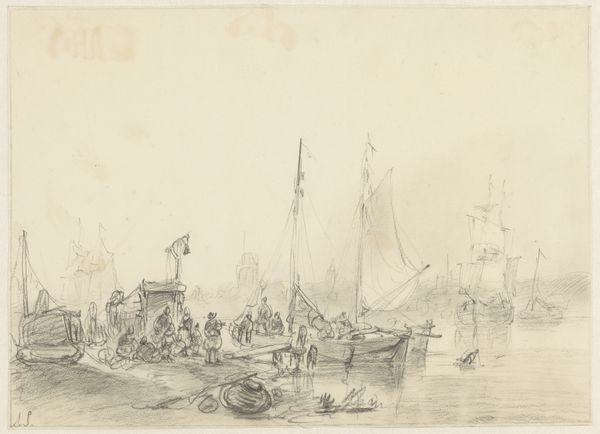
plein-air, watercolor
#
impressionism
#
plein-air
#
landscape
#
watercolor
#
watercolor
Copyright: Public Domain: Artvee
Editor: So, here we have Johan Barthold Jongkind's "The Port of Honfleur," a watercolor from 1864. The sky and water have such a light touch, it almost feels dreamlike. I am curious about what significance you see in a harbor scene from this period? Curator: Well, beyond the surface, we must delve into the context of 19th-century port cities. Honfleur wasn't just a pretty picture; it was a site of intense cultural and economic exchange, a nexus of power. Jongkind’s choice to depict it using the ephemeral qualities of watercolor, almost as a fleeting impression, makes one wonder about the colonial and capitalist flows shaping such harbors. Where are the labourers? Who truly benefits from the trade these ships enable? Editor: That’s a good point! I hadn’t considered that. The sketchiness makes it feel almost incomplete, perhaps even masking something... The way you contextualize the work through flows of capital helps highlight that absences can also reveal social dynamics at play. But if those economic tensions weren't explicitly illustrated, was Jongkind consciously engaging with those themes? Curator: Maybe consciously, maybe not. But as viewers, we engage with the artwork within our contemporary understanding. Analyzing art like this, we have the responsibility to apply an intersectional lens and consider the work’s silences. Can the wispy watercolor medium relate to our understanding of class, and power structures present within this maritime hub? How does it speak to contemporary ideas of climate change as a result of increased naval travel during this time? Editor: So even if Jongkind wasn't directly commenting, the act of representing this port opens a dialogue we can continue today? Thinking about the absent figures, and impact to environment during that time encourages a much richer understanding of both the artwork and the world around it! Curator: Precisely. And that's the beauty of art; it acts as a mirror reflecting our own concerns back at us, allowing for perpetual re-interpretation.
Comments
No comments
Be the first to comment and join the conversation on the ultimate creative platform.
